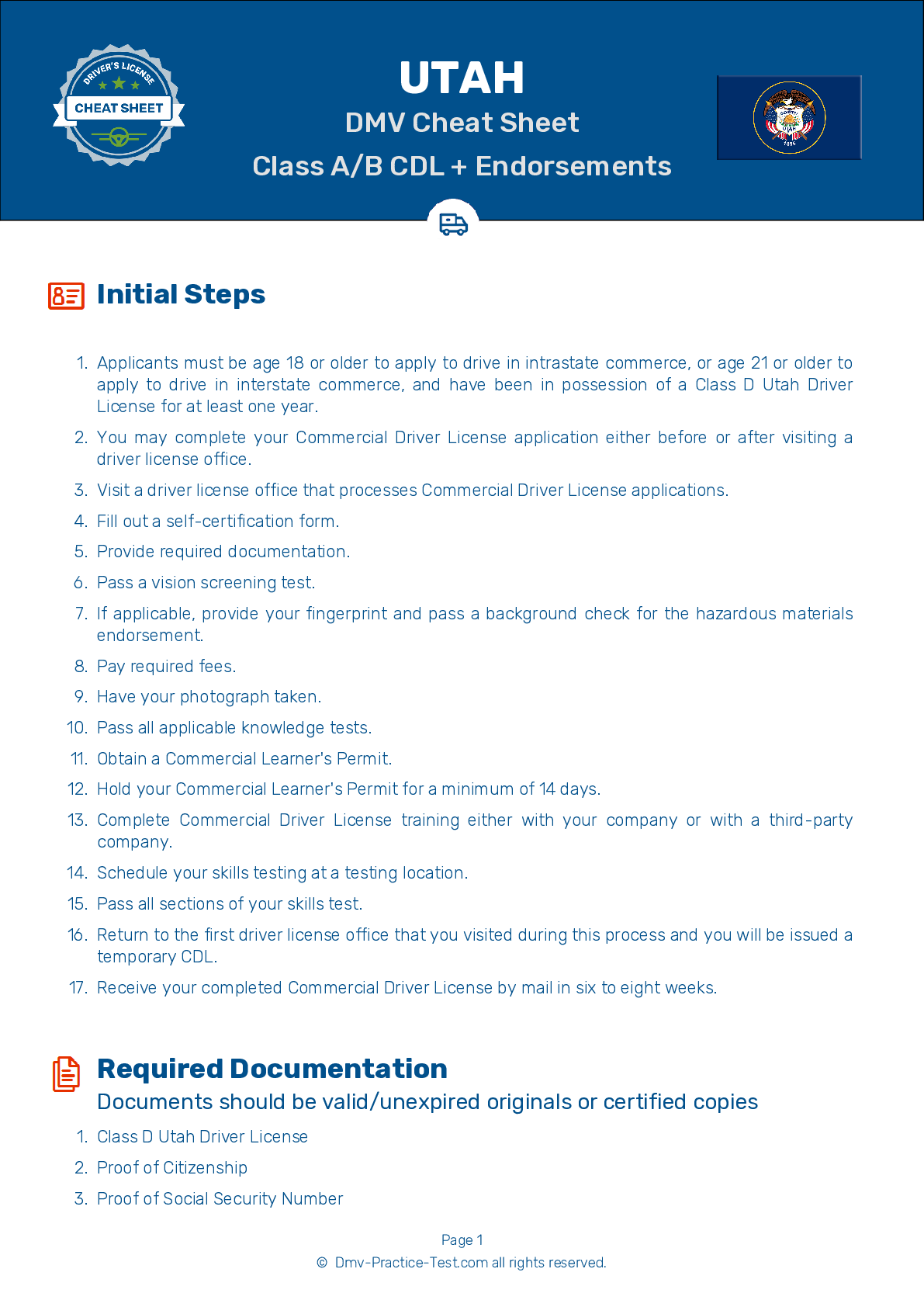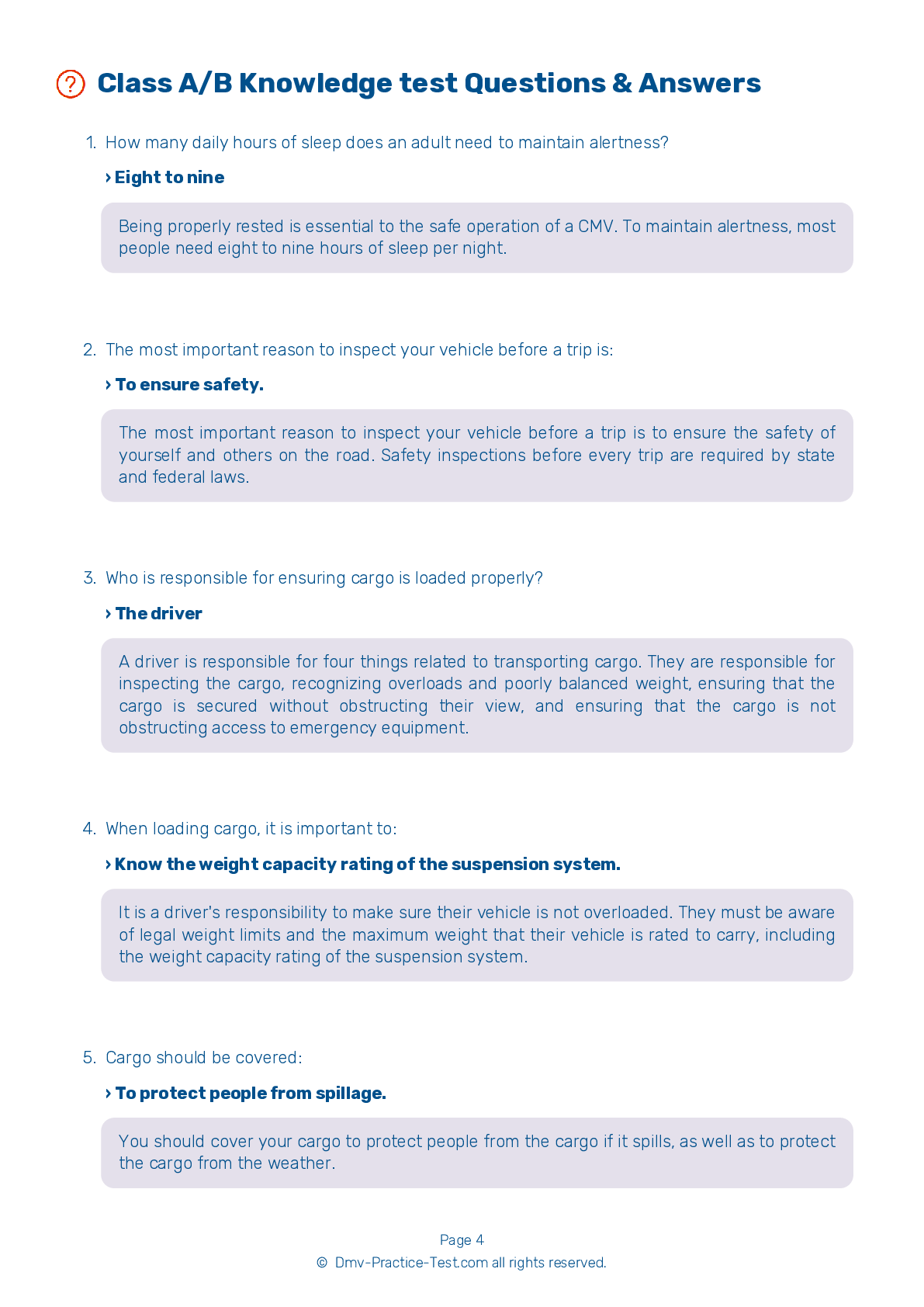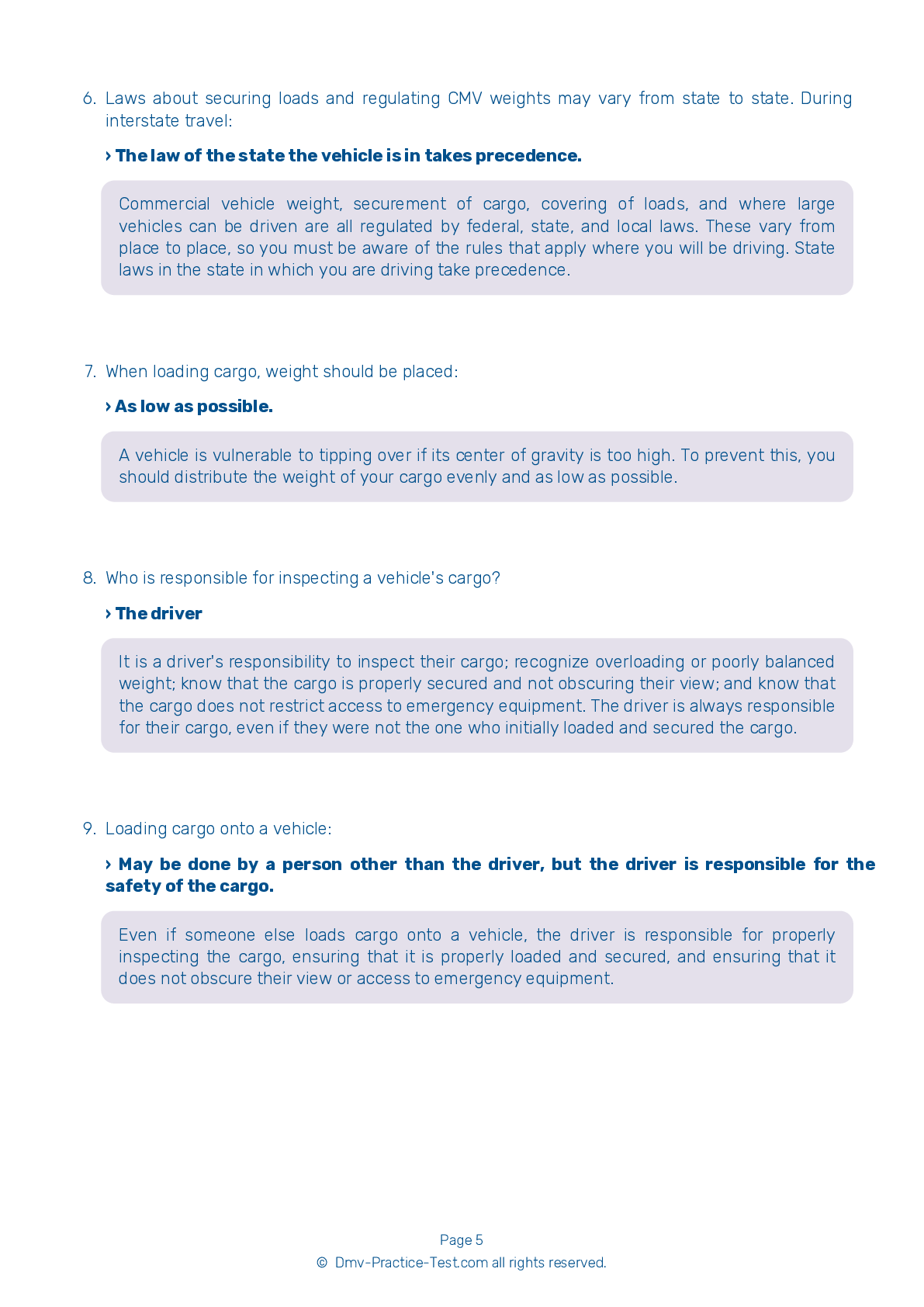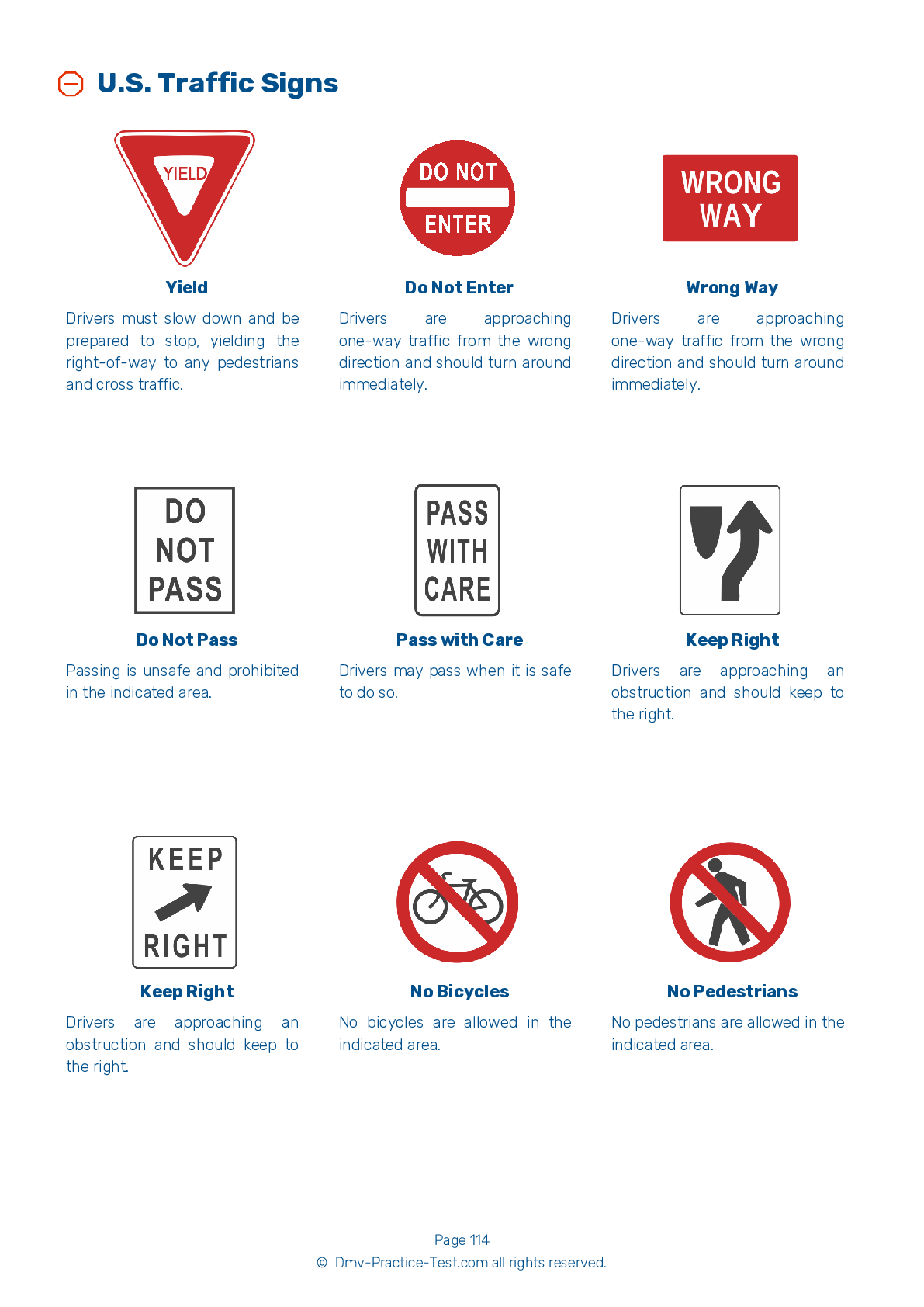Passenger #1
Passenger Endorsement | Utah 2025 #1
Train for FREE with our Utah CDL passenger endorsement practice test online. The official exam test consists of several obligatory parts, with all of them checking your knowledge of different blocks of road rules. If you need to obtain a UT DMV passenger endorsement in 2025, practice as much as possible. Free sample tests published on our website will help you check and improve your knowledge and boost your grades. Please bear in mind that DMV requirements for issuing a CDL permit with passenger endorsement may vary from state to state.
20
16
20
1 . Which of the following statements is correct?
Welded repairs are acceptable for wheels on rear axles.
Missing clamps, spacers, studs, or lugs can be a dangerous defect. Mismatched, bent, or cracked lock rings are not safe to be used. Wheels or rims with welded repairs are not safe.
2 . Noting the road speed is one way to determine when to upshift.
There are two indicators that determine when you need to shift into a higher gear. One indicator is the engine speed (rpm). You should read your vehicle's manual to learn its rpm range and shift up when you reach the top of that range. The other indicator is road speed (mph). You should learn which speeds each gear can accommodate, then keep an eye on the speedometer and shift up as needed.
3 . A flare is required emergency equipment.
When inspecting a vehicle, you should check for required safety equipment. This includes warning devices for parked vehicles, fuses, and liquid burning flares.
4 . A fire extinguisher is a required piece of safety equipment.
When inspecting a vehicle, you should check for required emergency equipment, including at least one fire extinguisher.
5 . A broken exhaust system:
Helps the vehicle run better.
A broken exhaust system is extremely hazardous because it can permit poisonous fumes to enter the vehicle's cab or sleeper berth.
6 . When switching gears, what happens if you remain in neutral for too long?
The vehicle will be difficult to stop.
Remaining in neutral for too long when shifting gears may make it difficult to put the vehicle into the next gear.
7 . Which of the following is acceptable?
Tires with cracks
When inspecting a vehicle, you should ensure that dual tires do not come into contact with each other or with other parts of the vehicle. Tire sizes should not be mismatched, and tires should not be cut or damaged in any way. Regrooved, recapped, or retreaded tires are not permitted to be used on the front wheels of a bus.
2025 Utah | Frequently Asked Questions
To secure a CDL Doubles/Triples endorsement in Utah, you first need a valid Commercial Driver's License (CDL). Next, study the Doubles and Triples section of the Utah CDL handbook. Then, schedule and pass the Doubles/Triples knowledge test at a Driver License Division office. After passing the test, you'll receive your endorsement. Remember, driving experience with these types of vehicles is beneficial.
To obtain a CDL Doubles/Triples license, you need a valid Commercial Driver's License (CDL). Study the Doubles and Triples section of your state's CDL handbook. Then, schedule and pass the Doubles/Triples knowledge test at your local driving license office. Upon passing, you will receive your endorsement. It's also recommended to have hands-on experience with these types of vehicles.
While it's not a legal requirement to have specialized experience or training for a CDL Doubles/Triples endorsement, it's highly recommended. This is because driving these types of vehicles requires specific skills. Studying the Doubles/Triples section of the CDL handbook and passing the knowledge test is mandatory, but practical experience can significantly improve safety and confidence.
Yes, to receive a CDL Doubles/Triples endorsement in Utah, you must pass an additional written knowledge test specifically for Doubles/Triples. This test covers the special procedures and safety considerations associated with operating these types of vehicles. It is separate from the general CDL written test. You can prepare by studying the Doubles/Triples section of your state's CDL handbook.
For the CDL Doubles/Triples endorsement, there isn't a specific skills or maneuvers test as there is with the basic CDL. The endorsement only requires a written knowledge test. However, the test will cover topics like coupling and uncoupling, inspecting doubles and triples, and managing the vehicles during different situations. These are skills you'll need to safely operate these vehicles.
No, it is not permissible to operate double or triple trailers without a valid CDL Doubles/Triples endorsement in Utah. The endorsement is required by federal and state law to ensure that drivers have the necessary skills and knowledge to safely operate these types of vehicles. Driving without the appropriate endorsement can result in fines and penalties.
You can append the CDL Doubles/Triples endorsement to your current commercial driver's license. You don't need to initiate a new application for a CDL. However, you'll need to pass the Doubles/Triples knowledge test. After passing, the endorsement will be added to your existing CDL. Remember, there's no skills test for this endorsement in Utah.
Yes, there are some limitations for drivers with a CDL Doubles/Triples endorsement. For instance, they can only drive vehicles that their base CDL allows. Additionally, all federal and state regulations regarding hours of service, vehicle maintenance, and safety inspections must be followed. Violating these rules can result in penalties or loss of the endorsement.
In Utah, double trailers can be up to 81 feet long and triple trailers up to 105 feet long. The maximum weight for both is 129,000 pounds. However, these limits can vary depending on the specific highways and routes used. Drivers should always check local regulations and restrictions before operating these types of vehicles.
Yes, drivers with a CDL Doubles/Triples endorsement must follow specific safety guidelines. These include checking that all couplings are secure, maintaining extra following distance, and taking wider turns to avoid trailer off-tracking. Also, they must be aware of the "crack-the-whip" effect, which can cause a rollover. Federal regulations also apply, such as hours-of-service rules.



